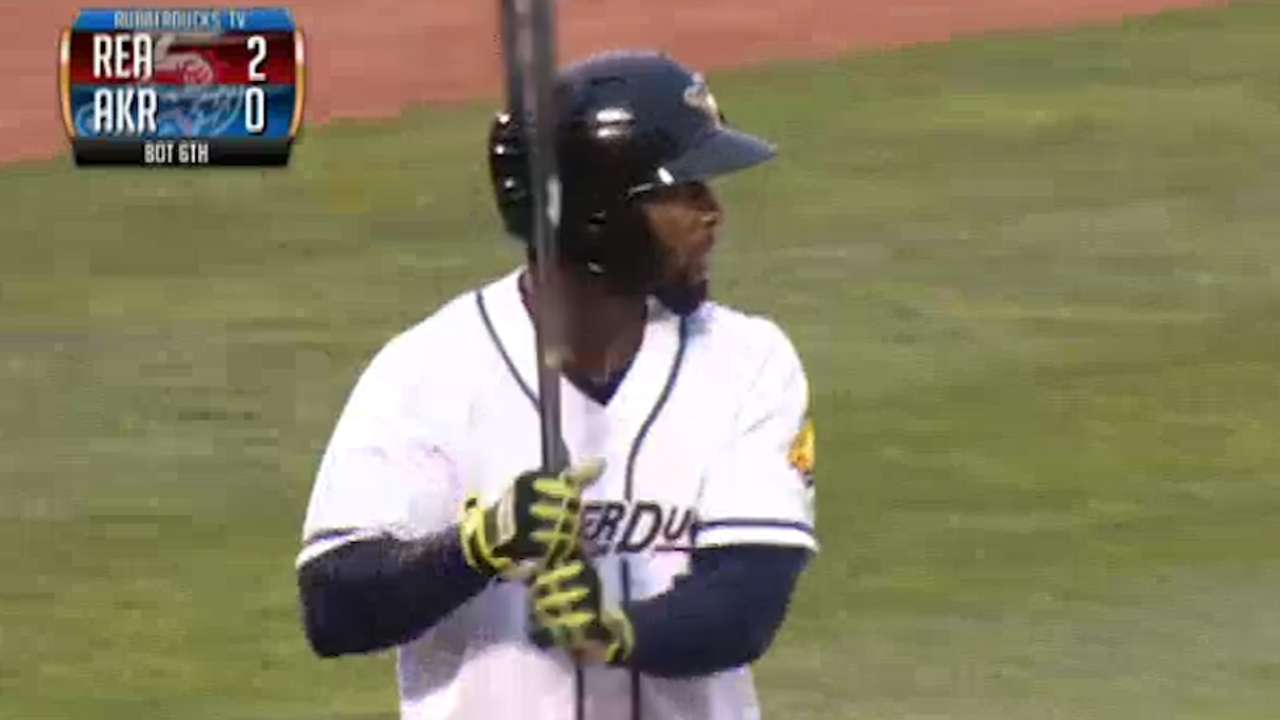Cleveland Indians double down with Edwin Encarnacion, fans start to respond -- Terry Pluto
CLEVELAND, Ohio -- I still find it hard to believe.
The Cleveland Indians go to Game 7 of the World Series...
Then sign Edwin Encarnacion...
And the payroll will jump from about $95 million to $135 million...
The Indians will introduce Encarnacion at a press a conference Thursday. He signed a three-year deal worth about $60 million with an option year for another $20 million. The contract is a bit complicated, but the bottom line is $60 million guaranteed.
That's the largest contract ever given out by the Tribe. The previous was $54 million over four years to Nick Swisher in 2013.
I've written before how the Indians wisely played the market, signing Encarnacion for a deal smaller than many projections.
Encarnacion turns 34 on Saturday. It's possible his production will decline.
But I remember something John Hart told me in 1994. The former Tribe general manager had just signed 38-year-old Eddie Murray and 40-year-old Dennis Martinez as the Indians were preparing to move into the new Jacobs Field.
"I know they are older," he said. "But 75 percent of those guys in their primes is better than most of what we have now."
Over the last three seasons, Encarnacion batted .269 (.905 OPS), averaging 38 HR and 112 RBI.
He missed only two games last season, splitting time between DH and first base.
Suppose Hart's 75 percent rule takes hold, and Encarnacion averages 29 homers and 95 RBI over the next three years.
The Indians will take that with a smile and a thank you.
KANSAS CITY MODEL
The Dolan ownership has made a major move with this signing.
Part of it is because they had a savory taste of the World Series. And part of it is they believe the fans will show up.
Let's look at the Tribe and another Central Division team that reached the World Series the previous two years -- Kansas City.
Code: Select all
Year Team Record (playoffs) Avg. Attn. MLB rank
2013 Indians 92-70 (wild card) 19,668 28th
2013 Royals 86-76 21,614 26th
2014 Indians 85-77 18,426 29th
2014 Royals 89-73 (World Series) 24,154 25th
2015 Indians 81-80 17,806 29th
2015 Royals 95-67 (WS champs) 33,438 10th
2016 Indians 94-68 (World Series) 19,650 28th
2016 Royals 81-81 31,576 12th
The Royals ranked only 25th in attendance in 2014, the year they surprised all of baseball by reaching the World Series.
It was the year after the World Series appearance -- 2015 -- that attendance soared. The Royals went from No. 25 to No. 10.
They reached the World Series again in 2015.
The enthusiasm from back-to-back appearances in the World Series helped the Royals rank No. 12 in attendance in 2016, despite a disappointing 81-81 record.
In some ways, the Tribe modeled their team after the Royals. They became younger and more athletic. Their defense improved. They were powered by a strong bullpen in the postseason, leading to the World Series.
They Royals were on a road like that in 2014 and 2015.
In 2014, the Royals had about 8,000 season ticket holders when they reached the World Series. That was when they averaged 24,154 fans.
In 2015, the Royals had more than 12,000 season ticket holders, according to the Kansas City Star.
In 2016, it was more than 13,000.
Here's what we know about the Indians:
In 2016, they had about 7,500 season ticket holders. That number has been stagnant for several years.
They are now above 10,000, based on what I've been told. Perhaps they will reach the same 12,000 level as the Royals did in their first season after reaching the World Series.
The Cleveland Indians have 10,000 in season ticket sales and the demand is the highest since the 1990s.
DOUBLING DOWN
If the Indians had failed to bring in someone such as Encarnacion, I doubt the ticket demand would be this high.
Ownership and the front office wisely seized the moment. In October, Cleveland became a Tribe Town again with the team's wonderful ride in the postseason.
The increased spending really began at the end of July. That was when president Chris Antonetti and general manager Mike Chernoff engineered a trade for star reliever Andrew Miller.
The lefty added $3 million to the 2016 payroll. He is paid $9 million annually in the next two seasons.
In addition to Encarnacion ($18 million), the Indians highest-paid players for 2017 are Carlos Santana ($12 million), Jason Kipnis ($9 million), Miller ($9 million), Michael Brantley ($8.3 million), Corey Kluber ($7.7 million), Cody Allen ($7.7 million estimate) and Carlos Carrasco ($6.5 million).
It would have been nice for the Indians to keep Rajai Davis. The outfielder is expected to sign with Oakland for $6 million.
They probably could have brought back Davis and Mike Napoli for less than the $18 million they will pay Encarnacion this season.
But the idea wasn't simply to return with the same team, but work (and spend) to have a better one.
It was both a smart and bold move.
So far, fans seem intrigued by the Tribe, and that could lead to some fun and crowded nights at Progressive Field this season.

